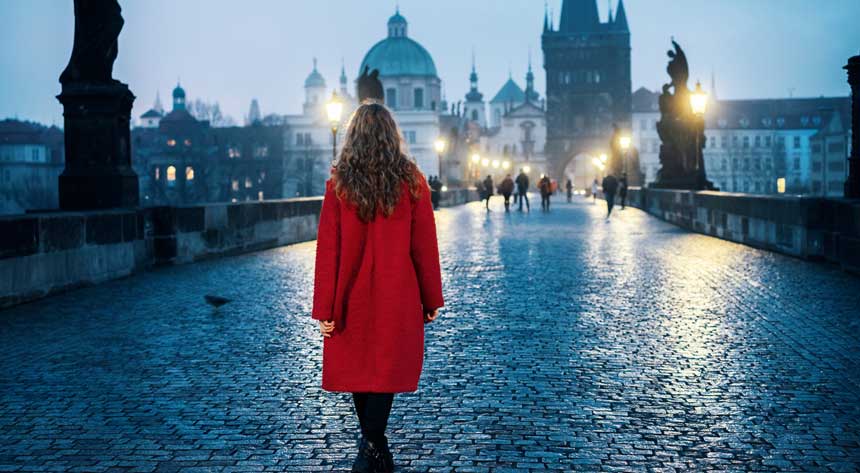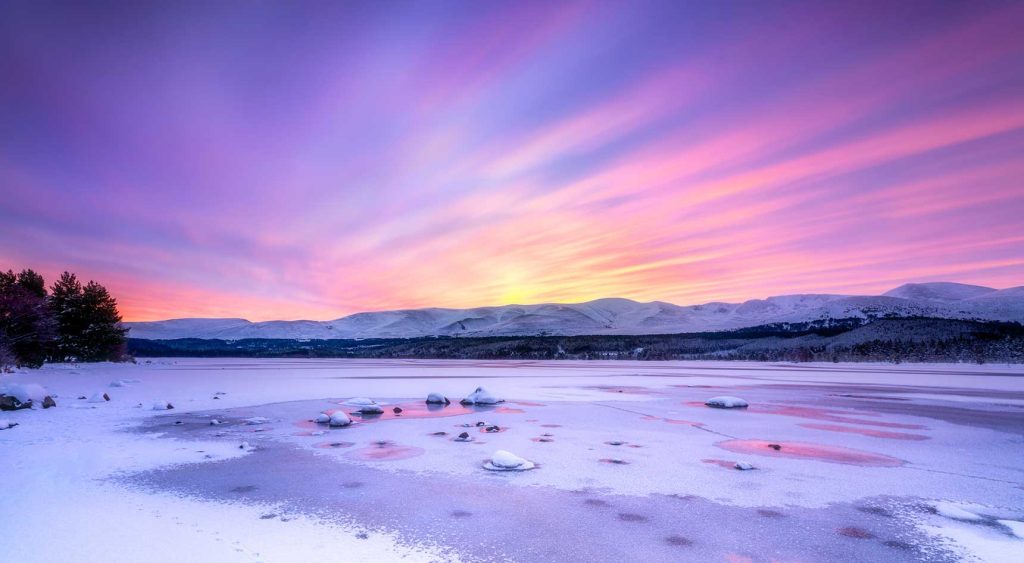4 European cities to visit in winter

Want to travel to Europe, but avoid the long lines and big crowds? Try an off-peak European holiday.
It may be winter here, but summer has arrived in Europe, and your social media feed is probably jam-packed with friends’ snaps from their Northern Hemisphere holidays. If you’re dreaming of a European escape but want to avoid the crowds, hot weather and premium prices, why not embrace an off-peak adventure instead.
Imagine Rome without hordes of travellers milling around the Colosseum or thousands of tourists cramming into St Peter’s Basilica at the Vatican. Take in the breathtaking frost-covered Scottish Highlands in October as snow begins to form on mountain peaks. Or, maybe you’ll be lucky enough to experience a white Christmas in Prague. This can all become a reality with an off-peak European holiday.
So, pack your thermals, a brolly and a warm jacket, because you’re going on a European winter adventure.
1. ‘Czech’ out Prague in winter
While the festive season isn’t technically the off-season, you must experience a white Christmas in Europe at least once. Prague is a magical city during December. The city’s orange roofs and famous spires turn snow white; Christmas markets serve warm, comforting food, mulled wine and other wares; a giant Christmas tree is on display in the Old Town Square; and festive lights and decorations are hung around the Czech capital.
For a stunning view of Prague, walk up Petřín Hill. From here, you can see the Vlatava River as it weaves its way through this historical city. Stroll around the nearby gardens or climb the Petřín Lookout Tower, which may look eerily familiar.

Following a visit to Paris, the Czech Tourist Club was so fascinated by the Eiffel Tower, a similar, yet smaller wrought-iron monument was built for the Jubilee Exhibition in Prague in 1891. Culture vultures will love Prague and can museum hop around the city.
Visit Franz Kafka Museum, which showcases the famous Prague-born writer’s life. The Museum of Communism will give you an interesting insight into life in Prague after World War II. For art lovers, the Prague National Gallery features international and Czech artwork at several locations, including the Scwarzenberg Palace.
A Prague winter is a musical one, with street performances, jazz bands playing in pubs, and orchestras, operas and gala concerts held at the majestic Smetana Concert Hall. With Mozart premiering Don Giovanni in Prague, it’s easy to see why this city takes its music so seriously.
2. A winter on the Mediterranean
The Greek islands might be synonymous with a European summer holiday, but that doesn’t mean Greece doesn’t have anything to offer in winter. Don’t expect to be soaking up the rays in Santorini or spending days snorkelling, but there are still lots of things to see and do. Combine sightseeing in Athens with day trips to the Saronic Islands.
Visiting Athens’ ancient ruins during the cooler months is a very different experience from seeing them in summer when you must contend with large crowds. Climb the 156m-high hill to the Acropolis and make the most of the quietness. Take your time exploring this ancient citadel, soaking up the history. The Agora – a central public place in ancient Athens – is also open during winter and offers a much more pleasant experience without the searing sunshine beating down. Peruse the marketplace and learn about the statues and monuments at your own pace. While it may be quieter, daylight hours are shorter in winter, so many of the sites close about 5pm instead of 7pm.
Just off the coast of Athens, the Saronic Islands make for excellent day trips, even during winter. Hydra has about 3000 permanent residents and is still very much open during the cooler months. Instead of sipping drinks at cliff-top bars, sit under a warm heater at a harbourside tavern and watch boats come and go. Only a one-hour ferry ride from the Greek capital, you’ll find Aegina – a year-round destination. Here there are archaeological sites such as the Temple of Aphaia. Learn about the temple dedicated to Aphaia – a Greek goddess – and enjoy stunning ocean views of the surrounding islands. Who says you can’t island hop in Greece during winter?
3. The snowy Scottish Highlands

Be prepared for all types of weather when you’re in Scotland. One moment it’ll be cool but sunny and the next sleet – a mixture of snow and rain – will be falling from the sky. Despite this, Scotland offers some beautiful natural landscapes that can be enjoyed all-year round.
Explore historic Edinburgh then head for the countryside and venture into the Scottish Highlands, home to Cairngorms National Park. This 4528sqkm national park has spectacular scenery, an abundance of wildlife, accommodation, a distillery and even Balmoral Castle – a residence of the British royal family.
In winter, the park comes to life with plenty to do and see. While many animals hibernate during the cooler months, at Highland Wildlife Park you can still see about 240 animals, including snow leopards, arctic foxes and even polar bears.
History aficionados will be right at home in the Scottish Highlands, with a treasure trove of castles and historic artefacts dotted around Cairngorms National Park. Some historical ruins – like Ruthven Barracks and Drumin Castle – reflect the region’s chequered past, which included royal feuds and bloody battles. If you’re looking for a more regal experience, take a tour of the grounds and gardens at Balmoral Castle.
4. Lighting up winter in Rome

If you visit Rome in winter, you won’t melt in the summer sun waiting to enter the Colosseum or need to jostle at the Trevi Fountain to get the perfect photo. During the cooler months, many of Rome’s popular attractions are quieter and the ancient city has a mild climate, so even in the dead of winter there are usually lots of sunny days.
Crisp winter days make the light in Rome magical. In the afternoon, you’ll get a burst of warm light and then spectacular shadows will cross the ancient monuments in the ‘Eternal City’.
Climb to the top of St Peter’s Dome just as the sun begins to drop below the horizon and you’ll see the many lights twinkling across the Vatican and Rome, illuminating the night sky.
For a new perspective of the Colosseum, take a night tour, which usually run daily until the end of December. Visit the maze of tunnels and passages where gladiators prepared for battle and beasts were caged ready for the hunting scenes portrayed in this world-famous amphitheatre.
All this exploration might leave you with some hunger pangs. Rome has its own regional specialities, and there’s nothing better on a cold winter day than tucking into a bowl of pasta. For dinner, visit Rimessa Roscioli in the Historic Centre. Devour a plate of the restaurant’s tagliolini cacio e pepe (ribbon pasta coated with tangy pecorino and a generous sprinkling of black pepper). What a lovely way to end a day in Rome.
Ready for a European adventure in winter?
Let an RAA travel agent take the stress out of organising your next holiday.
Or call 8202 4589

